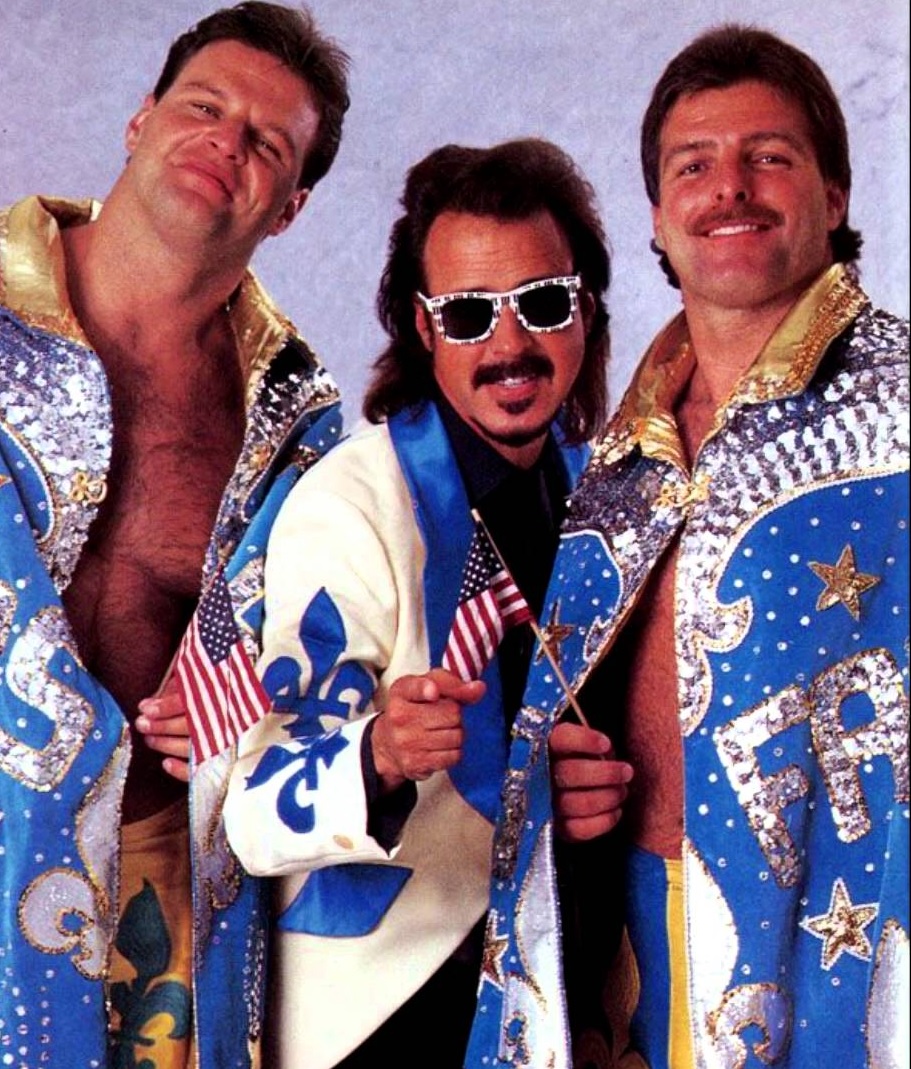Exploring WWF In The 1980s: A Decade Of Wrestling Evolution
The 1980s were a transformative decade for the World Wrestling Federation (WWF), now known as WWE. This era not only redefined professional wrestling but also established it as a mainstream entertainment phenomenon. From iconic wrestlers to unforgettable matches, the WWF during the 1980s laid the groundwork for what we see in wrestling today.
The rise of superstars like Hulk Hogan and Randy Savage captured the hearts of millions, turning them into household names. The WWF also embraced innovative marketing strategies, celebrity involvement, and major events like WrestleMania, which became the hallmark of professional wrestling. This article will dive deep into the significant events, personalities, and cultural impact of WWF in the 1980s.
Join us as we explore the legacy of WWF in the 1980s, examining the key moments that shaped the industry and the factors that contributed to its explosive growth. Whether you're a long-time fan or new to the world of wrestling, this comprehensive look back at WWF in the 1980s is sure to provide valuable insights and nostalgia.
Table of Contents
- Biography of WWF in the 1980s
- Key Events that Shaped WWF
- Iconic Wrestlers of the 1980s
- The Birth of WrestleMania
- Cultural Impact of WWF
- Merchandising and Marketing Strategies
- Challenges Faced by WWF
- Legacy of WWF in the 1980s
Biography of WWF in the 1980s
The WWF, founded in the 1950s, experienced immense growth throughout the 1980s. Under the leadership of Vince McMahon, the organization transformed from a regional wrestling promotion into a national powerhouse. This decade saw the introduction of colorful characters, elaborate storylines, and the crossover of wrestling into pop culture.
| Year | Significant Event |
|---|---|
| 1985 | First WrestleMania held at Madison Square Garden |
| 1987 | Formation of the Survivor Series, a major pay-per-view event |
| 1989 | Introduction of the Royal Rumble, a unique match format |
Key Events that Shaped WWF
Throughout the 1980s, several key events contributed to the growth and popularity of the WWF:
- WrestleMania I (1985): This landmark event marked the beginning of the pay-per-view era in wrestling and set the stage for future WrestleMania events.
- Hulkamania Takeover: Hulk Hogan became the face of WWF, captivating audiences with his charisma and larger-than-life persona.
- Celebrity Involvement: The WWF featured appearances by celebrities like Cyndi Lauper and Muhammad Ali, broadening its appeal.
Iconic Wrestlers of the 1980s
The 1980s saw the rise of several wrestling legends who became icons of the sport:
Hulk Hogan
Perhaps the most recognizable face of wrestling, Hogan's "Hulkamania" became a cultural phenomenon. His matches and feuds captivated audiences and solidified the WWF's mainstream status.
Randy "Macho Man" Savage
Known for his colorful attire and intense promos, Savage was a key player in the WWF during the 80s. His rivalry with Hogan and his unforgettable matches made him a fan favorite.
The Birth of WrestleMania
WrestleMania, often referred to as the "Grandest Stage of Them All," debuted in 1985 and quickly became an annual tradition. This event brought together the best talent in wrestling and featured celebrity appearances, making it a must-watch.
- WrestleMania I: Featuring a main event with Hulk Hogan and Mr. T, this event set the standard for future WrestleMania shows.
- WrestleMania III (1987): Famous for the iconic match between Hogan and Andre the Giant, this event drew a record crowd and solidified WrestleMania's place in pop culture.
Cultural Impact of WWF
The WWF in the 1980s transcended the realm of sports, impacting pop culture significantly:
- Television Shows: WWF programming became a staple on Saturday mornings, introducing wrestling to a new generation of fans.
- Merchandising: The WWF capitalized on its popularity by creating a range of merchandise, including action figures, t-shirts, and video games.
- Media Coverage: Increased media coverage helped the WWF reach audiences beyond traditional wrestling fans.
Merchandising and Marketing Strategies
WWF's innovative marketing strategies played a crucial role in its success during the 1980s:
- Creation of iconic logos and branding.
- Strategic partnerships with major retailers for merchandise sales.
- Involvement in charity events and community outreach to build a positive image.
Challenges Faced by WWF
Despite its success, the WWF faced several challenges during the 1980s:
- Competition: Rival promotions like WCW emerged, challenging WWF's dominance.
- Scandals: Controversies surrounding drug use and other issues threatened the organization's reputation.
- Transitioning Talent: The departure of key talent forced the WWF to adapt and evolve.
Legacy of WWF in the 1980s
The legacy of WWF in the 1980s is still felt today. The innovations introduced during this decade laid the groundwork for modern professional wrestling. From pay-per-view events to the concept of sports entertainment, the 1980s were pivotal in shaping the industry.
In conclusion, the WWF in the 1980s was a magical time that brought wrestling to the forefront of American culture. The iconic wrestlers, groundbreaking events, and innovative marketing strategies created a legacy that continues to influence the wrestling world today.
We invite readers to share their thoughts and experiences with WWF in the 1980s. What were your favorite moments? Leave a comment below and don't forget to share this article with fellow wrestling fans!
Thank you for visiting our site! We hope to see you back here for more exciting content about the world of wrestling.
Churchill Okorie: The Rising Star In Nigerian Entertainment
Understanding Dynamic Trios: The Power Of Collaboration In Teams
Thimble Fingers: The Art Of Crafting With Precision


